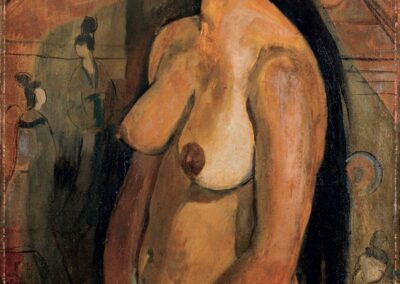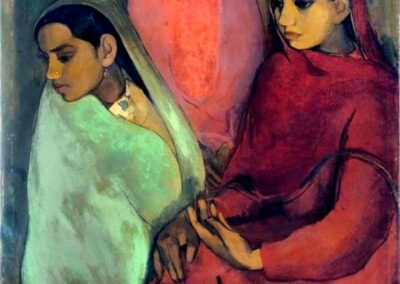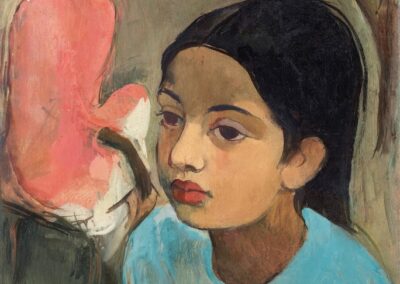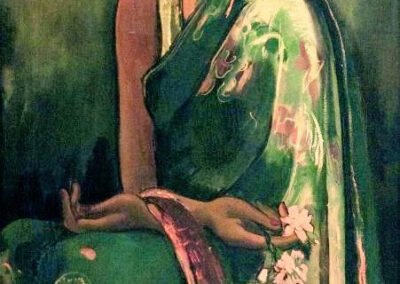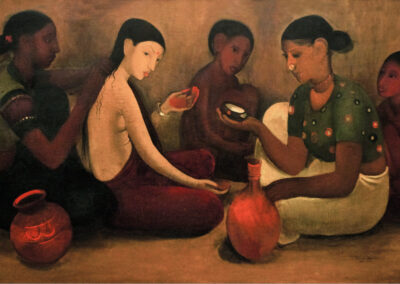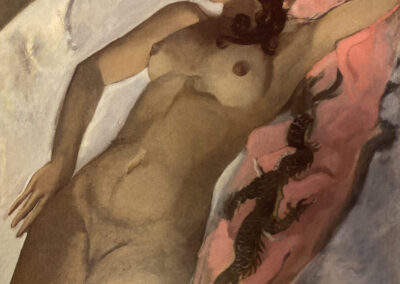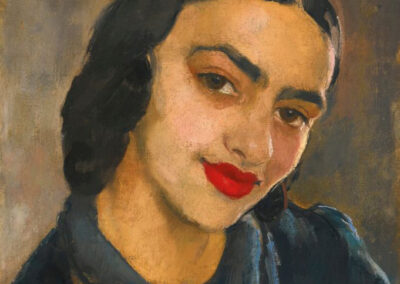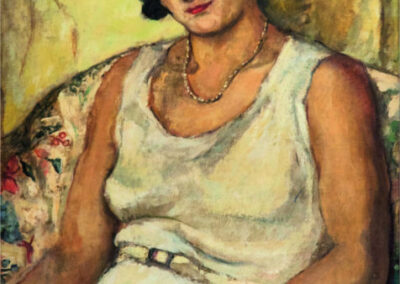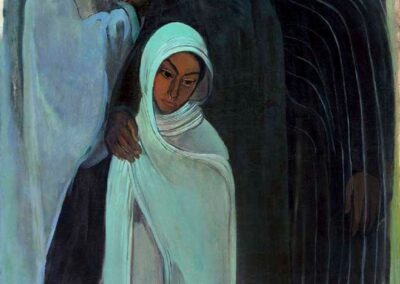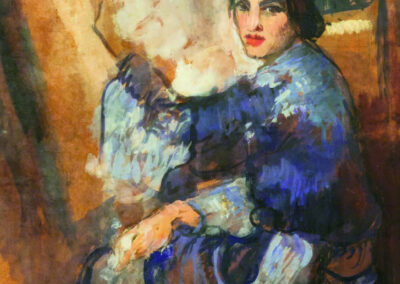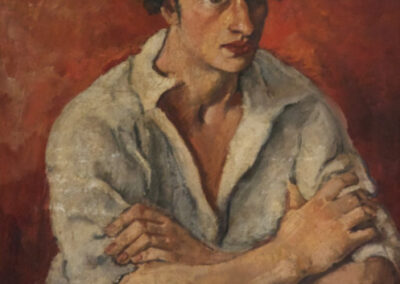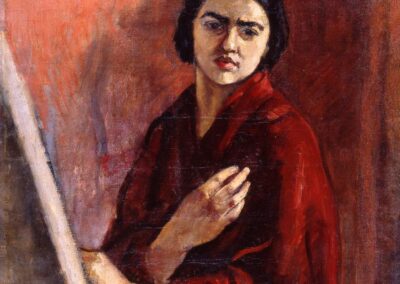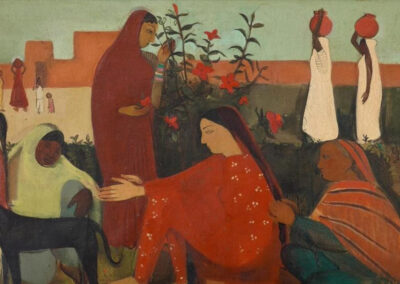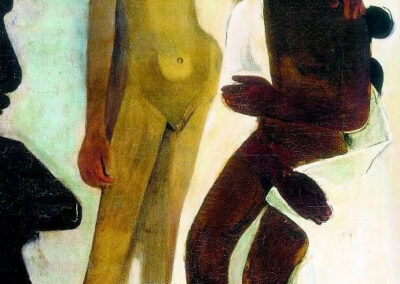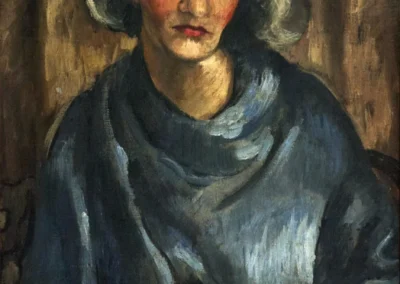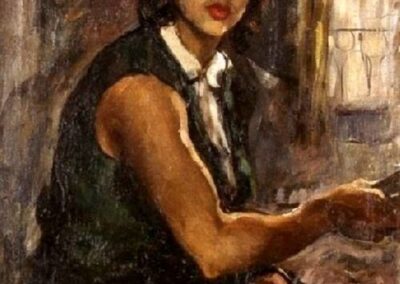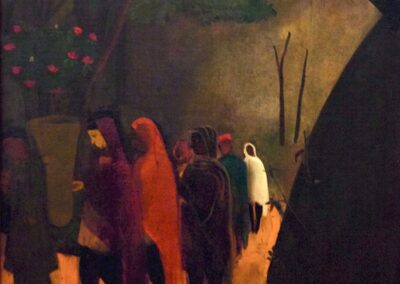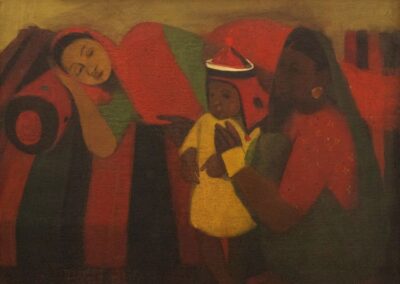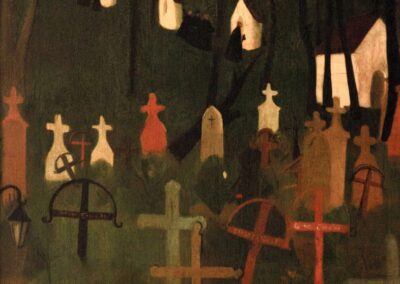Our next Artist You Need To Know is Amrita Sher – Gil. Though she died at the age of 28, Sher – Gil has been acclaimed as one of the greatest avant-garde women artists of the early 20th century and a pioneer in modern Indian art. Khushwant Singh, writing in 2013, commented that Sher-Gil had “a life cut tragically short, but with more colour perhaps than one may find in her work.”
Sher – Gil once famously proclaimed that “Europe belongs to Picasso, Matisse and Braque and many others. India belongs only to me.” In considering her legacy and influences, both in the visual arts world and beyond, this statement, though blunt, has a resonance of truth to it, as well. She is often cited in tandem with Frida Kahlo, for how both blended aspects of European modernism with the styles and aesthetics of the immediate worlds they existed within, and, of course, for their ongoing pervasive influence on contemporary artists in their respective nations, and beyond.
-
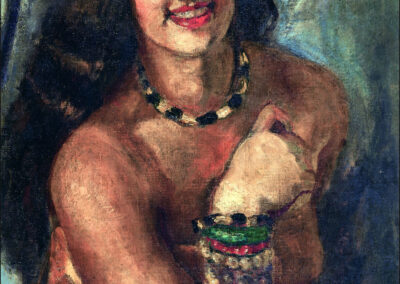
Self portrait, 1930
-

Self Portrait as Tahitian, 1934
-

Three Girls, 1935
-

The Little Girl in Blue, 1934
-

Sumair, 1936
-

Bride's Toilet, 1937
Sher – Gill was born in Hungary: her father came from the Sikh nobility and her mother was a member of the Hungarian bourgeoisie. Her family lived in Hungary for the duration of WW I, and returned to Simia, in Northern India, in 1919.
Early lessons in music and art captured her attention, and she displayed proficiency in both. The family relocated to Paris in 1929, where Sher – Gil attended Pierre Vaillant’s lessons at the Grande Chaumière academy and then those of Lucien Simon’s studio as a “free student” at the School of Fine Arts until 1934. During this time, she was greatly influenced by European ideas of impressionism, expressionism and realism, producing almost exclusively portraits of models that were very marked by her teachers and prevailing trends in Paris, and Europe. Eventually becoming dissatisfied with this, and wanting to explore her own identity and heritage, Sher – Gill choose to return to India. (from AWARE)
Upon her arrival in India, “she adopted this modernist approach to portray the poor and yet colourful lives of local people, making her art a true fusion of east and west.” (from an exhibition of her work at Tate Modern, in 2007)
-

Self-portrait (untitled), 1931
-

Sleep, 1932
-

Hungarian Gypsy Girl , 1932
-

Untitled (Self Portrait) , 1933
-

Klarra Szepessy, 1932
-

Hill Women, 1935
An avid reader and painter, Sher – Gil is considered by art historians to be as important as the pioneers from the Bengal Renaissance: sadly, her work was not widely acclaimed while she was alive, but has been recognized posthumously for its importance. Some of this dismissal may be due to bigotry, as Sher – Gil made no secret of her bisexuality, and many of her portraits of women include past lovers. As well, politically, Sher – Gil was in favour of India’s independence from the United Kingdom, but this was a movement that – like any fight for freedom and autonomy – could be fractious, and Sher – Gil was a vocal proponent for the rights of women, in any political discourse.
Indian artists from Sayed Haider Raza to Arpita Singh have been influenced by Sher – Gil’s art and life: her focus upon the lives – and suffering – of women has spoken to artists far beyond the borders of India. The majority of her artworks are housed in the National Gallery of Modern Art in New Delhi, a bequest offered upon her sudden death in 1928 (the Government of India has declared her works as National Art Treasures). Several of her works are also on display at Lahore Museum (Lahore was a city in India, prior to the imposed British partition of the Radcliffe line, and is now the capital of the Pakistani province of Punjab). In 1978, a postage stamp depicting her painting Hill Women was created, to honour the artist, by India Post. In Budapest, the Indian Cultural Centre is named after her, as well, as the Amrita Sher – Gil Cultural Center. A documentary film, Amrita Sher – Gil (1969), directed by Bhagwan Das Garga and produced by the Government of India’s Films Division was a winner of the National Film Award for Best Non-Feature Film.
-

Self Portrait, 1930s
-

Portrait of a Young Man, 1930
-

Self Portrait with Easel, n.d
-

Two Women, n.d.
-

In the Ladies Enclosure, 1938
-

Two Girls, 1939
In 2013, UNESCO (United Nations Educational, Scientific and Cultural Organization) declared that year – the 100th anniversary of Sher – Gil’s birth – as the international year of Amrita Sher – Gil. Her art has inspired a number of creations outside the sphere of visual arts. Two of the most famous are the novel Faking It by Amrita Chowdhury, and that the character Aurora Zogoiby, in Salman Rushdie’s 1995 novel The Moor’s Last Sigh, is based upon Sher – Gil’s artwork and groundbreaking life (both her paintings, her political activism and ‘controversial’ life). In 2016, to mark what would have been the artist’s 103rd birthday, a Google Doodle was created for the occasion.
-

Portrait of Madam Tachlitzky, n.d.
-

Self portrait in green, 1934
-

Hill Scene, 1938
-

Red Veranda, 1938
-

Resting, 1940
-

The Merry Cemetery, 1939
In 1941, at age 28, mere days before her first major solo show in Lahore, Sher – Gil became seriously ill and slipped into a coma and died around midnight on 5 December 1941. The sheer volume of work she left behind belies her sudden, too soon death. The cause of death has been a question, and remains so, to this day: her mother accused her husband of having murdered her, and other theories suggest a botched abortion resulting in peritonitis. On December 7th, 1941, Sher – Gil was cremated in Lahore.
The accompanying text for an exhibition of Sher – Gil’s work at Kiran Nadar Museum of Art in 2013 offered the following: “…the reality of her untimely death at the age of 28, could lead one to seek her biography in her self-portraits.” (from here)
Amrita Sher – Gil was as deft with her words as with her brush: “I am an individualist, evolving a new technique, which, through not necessarily Indian in the traditional sense of the word, will yet be fundamentally Indian in spirit. With the eternal significance of form and color I interpret India and, principally, the life of the Indian poor on the plane that transcends the plane of mere sentimental interest.”

